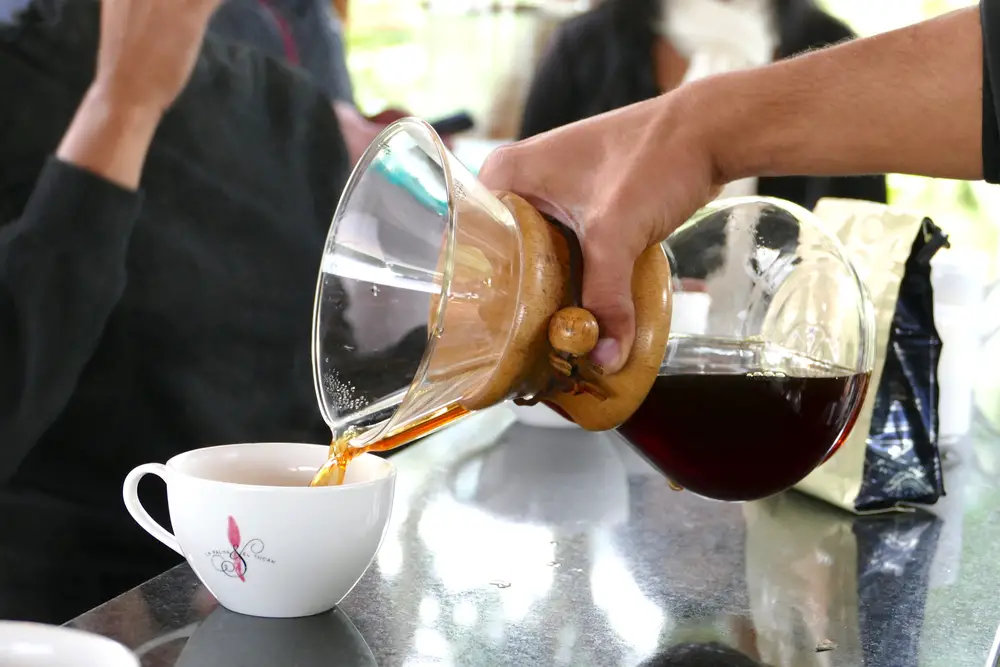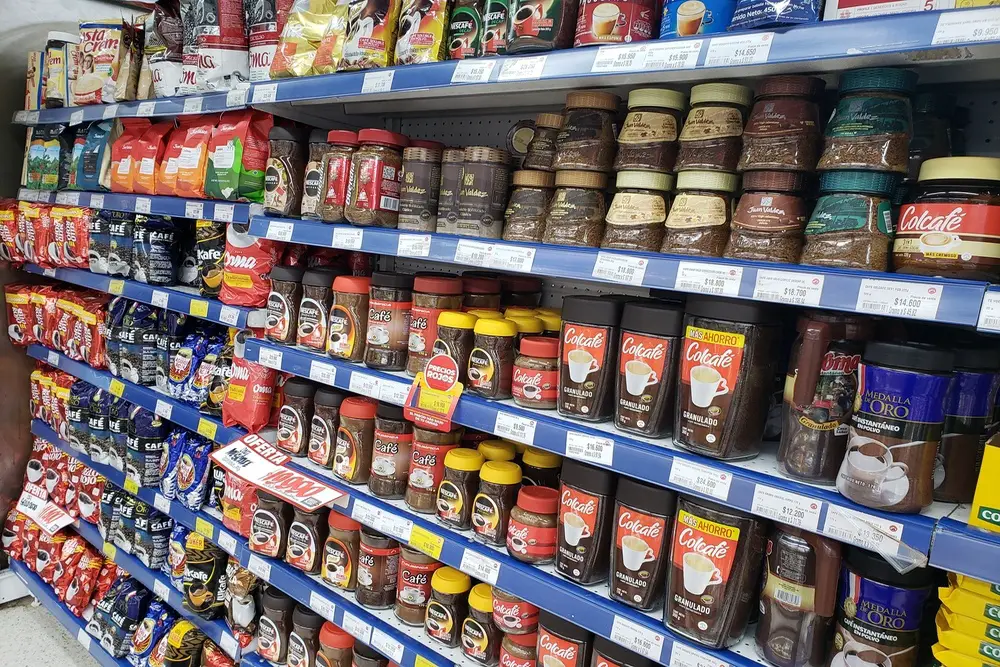An expert in coffee tasting uses cupping to determine and classify the characteristics of coffee.
Table of Contents
Basics of coffee tasting
Cupping is a technique used by professional coffee specialists to evaluate their beans and refine a roast, for example.
However, you don’t have to be a coffee expert to become a cupper, because this technique requires practice above all else.
However, if you are already working in the coffee industry or have good theoretical and practical knowledge of coffee, you will find it easier to enter this profession.
If you want to become a professional coffee taster, you must first take and pass the Q Grader exam, which qualifies you as an expert taster.
What is coffee cupping?
Coffee cupping or tasting is a process in which the coffee is prepared to be of a lower concentration, i.e. a weaker or milder coffee.
The coffee is then served in small cups, with the aim of trying several different types of coffee that differ from each other; therefore, it is necessary to compare at least two different varieties side by side.
When cupping, we can then taste the coffee’s subtle notes, i.e. the aromas that are not so easily discerned in a conventionally served cup.
The most important principles of tasting
In order to do a coffee tasting the right way, we have to follow a number of important steps.
- First of all, we must pay attention to the fact that the method of preparing the coffee is very simple, so that we can repeat it several times.
- Secondly, we must be very careful how we serve this drink since the taste of a particular coffee can change depending on the way it is poured.
The immersion method is best for cupping coffee, as with this method the coffee is placed in a container, hot water is poured over it and then filtered.
In this way, this process can easily be repeated.
To give you a clear idea, think of making coffee for cupping as making a small cup of coffee using a French press, but without the pressing.
Another key element in cupping coffee is comparison. So, you should try at least two different types of coffee to compare and contrast their tastes.
If you’re new to cupping, don’t rush into it. Experts recommend that you begin by tasting two, then three coffees until you can gradually and unhurriedly make comparisons of 5 or more coffees.
Characteristics to analyze in a coffee tasting
There are a number of characteristics that need to be analyzed in order to understand the complexity of coffee.
The aroma
Aroma is the essence or scent that a particular coffee has. In this way it is possible to smell fruit and floral scents, that is, sweet and pleasant scents.
On the contrary, you should keep in mind that smells like wood, leather or damp are clear signs that the coffee is not of good quality or should not be consumed at all.
The body
Coffee’s body is the property that describes how dense or “heavy” the beverage can be.
Various body types have been described, such as:
- Creamy body
- Light body
- Dense body
Flavor
This is the sensation that the drink evokes on our tongue. In this way we can identify three flavors in a cup of coffee:
- Sweet taste
- Sour taste
- Bitter taste
However, each of these flavors can have their own nuances; the sweetness can be reminiscent of a fruit, but also of an herbal aroma such as vanilla.
The aftertaste
This property of coffee is defined as the sensation the coffee leaves in the mouth after it has been swallowed.
So, depending on the duration of this sensation, the aftertaste can be categorized as follows;
- Short aftertaste
- Long aftertaste
- Lasting aftertaste
The color
The color of the coffee is due to the degree of roasting of the beans, therefore a coffee with a strong dark color is a coffee whose beans have been roasted longer.
The opposite is true for lighter coffees.
How to taste coffee at home?
If you want to start your coffee tasting journey, you can follow these simple steps.
Boil some water
As this is a home cupping process, we will use 200ml of boiling water for each type of coffee to be tested.
So, if you have three types of coffee, boil 600ml of water.
Measure the amount of coffee correctly
Measure out 10-12 grams of coffee for each sample to be tested. The easiest way is to use a kitchen scale.
Grind the coffee
Ideally, in order to properly cup, you should have unground beans of the coffee you wish to evaluate.
However, if you don’t have a coffee grinder, you can use pre-ground coffee, although it’s not the same thing.
If you have a coffee grinder, try not to grind the beans too fine, i.e. the coffee should be ground coarser than normal.
Also, make sure you use a different container for each coffee sample and a different cup for each coffee.
Pour the hot water over the coffee
Pour 200ml of water over the 10g of each coffee sample and let the mixture stand for at least 5 minutes.
Stir carefully
After a few minutes you will notice that a layer has formed on the coffee. So start with a small spoon to gently stir the coffee to break the layer.
Be careful not to mix this layer with the rest of the coffee and discard it as it contains the solid remains of the beans.
Start comparison
To start the test, the coffee should first cool down a bit.
- Remember, the hotter the coffee, the harder it is to judge.
Now that the coffee isn’t that hot, it’s time to start the coffee comparison, which is the essence of cupping.
Also, don’t drink straight from the cups, take a small spoonful and sip.
Slurping the coffee helps draw air into your mouth at the same time so you can taste it better, as the air helps the liquid spread evenly in the mouth and on the tongue.
So, all your taste buds can participate in the tasting.
Note the similarities and differences between the types of coffee
Take turns taking sips and focus on the similarities and differences between the samples you have.
It’s also a good idea to record the results in a notebook, as the coffee may be easier to taste as it cools, but the taste may change during cupping.
It’s also a good idea to keep your notes so you can compare them over time so you have proof of your progress in identifying coffee traits.
Techniques and mistakes in coffee tasting
A common mistake made by beginners in the world of cupping is that they rush to distinguish very specific characteristics of coffee without paying attention to the more general and therefore easier to spot characteristics.
So, don’t focus on searching for specific characteristics, such as B. Cherry notes in a cup of coffee, because that will certainly fail you in the beginning.
Instead, focus on comparing coffees with very different flavors, as the differences will then be easier to spot.
A tip many tasting experts give is to start with coffees of different origins. For example, you can compare coffee from Colombia with coffee from Indonesia or Ethiopia.
Also remember that the procedure is not rushed and there are no wrong answers at this point.
So, what you recognize in the coffee depends on your perception. But with time and practice, you will surely start distinguishing between certain types of coffee until you are able to identify every ingredient mentioned on the packaging.
Emphasis on malty and fruity notes
Another tip from seasoned tasters is to distinguish the most common malt notes from the start, such as B:
- The taste of chocolate
- The taste of caramel
- The taste of tobacco
Well, these notes are among the most easily distinguished and also more likely to be recognized than cherry, mango, or orange notes (which aren’t as easy to identify).
Additional tips to improve your coffee tasting skills
As previously mentioned, if you’re interested in getting started with coffee cupping, it’s good to drink plenty of coffee.
However, it is not enough just to drink coffee, you also have to vary the type of coffee and the degree of roasting.
As you already know, the degree of roasting will greatly affect the taste of the coffee. Therefore, it is very important that you get used to both heavy roast and light roast coffees.
Learn to recognize the 5 basic tastes
There are 5 basic flavors:
- Sweet
- Salty
- Tart or sour
- Bitter
- Umami
For each of the flavors above, you can use the following ingredients:
- A little sugar for the sweeties
- A pinch of salt for the salty ones
- A little lemon juice for the sour taste
- Some quinine for the bitterness
- And for the umami, a small amount of monosodium glutamate
So, the idea is that you know how to recognize (even with your eyes closed) the subtle differences in taste before you start distinguishing the different types of coffee.
So, start with one flavor at a time and then practice with a mix of several until you can recognize them individually.
Eat other foods
Coffee can evoke aromas very similar to those of many fruits such as strawberries, cherries and mangoes, but also essences such as vanilla or nuts such as almonds, hazelnuts, pistachios and many others.
It is therefore important that you get your tongue used to recognizing the taste of the foods that contribute to the nuances of a particular coffee.
Familiarize yourself with the coffee aroma wheel
Have you ever heard of the coffee aroma wheel? If not, it’s a good idea to read up on what it is and how it works.
Thus, the coffee aroma wheel is a tool often used by experienced tasters to check the classification of the spectrum of aromas present in that beverage.
With the help of this tool, you can memorize the taste categories and learn the relevant technical terminology at the same time.
So, the aim is to expand both your coffee lexicon and the number of aromas that you can recognize and describe when tasting each coffee.
But the most important thing is that you taste every flavor in every category, which will take some time.
Get expert advice
It is recommended that you take the initiative if you want to become a cupper.
However, it would be great if you could get expert feedback so you know how you’ve progressed, what you got right and wrong, and how you can improve. And how can you improve?
You have many options: You can go to your favorite café and ask the baristas, because they almost always know cupping well.
Also, coffee shops are often the places where expert cupping events are organized, so be proactive and get inspired.
Types of coffee powder
Now that you know what to look for when tasting a cup of coffee, it’s time to learn about the two types of tasting used professionally.
Note that these two methods are used depending on what you want to analyze in the coffee.
Brazilian coffee tasting
This type of cupping is about analyzing the coffee beans as completely as possible. For this purpose, a sample of freshly ground coffee is used, to which hot water is added.
Then you let it steep for 3 to 5 minutes and then start drinking the brew in small sips. The aim of this type of cupping is to bring out all the nuances, flavors and aromas of the roasted coffee.
Brazilian cupping is also considered to be the most comprehensive method of comparative coffee testing. In addition, this method can also be used to assess the degree of roasting of the beans.
Espresso cupping
This type of cupping uses a freshly brewed espresso coffee and while this test is very good at assessing characteristics such as coffee’s body, others such as flavor are more difficult to assess.
So, this test is not so popular among amateurs, but more among connoisseurs who want to find a balance in machine brews (like espresso).



